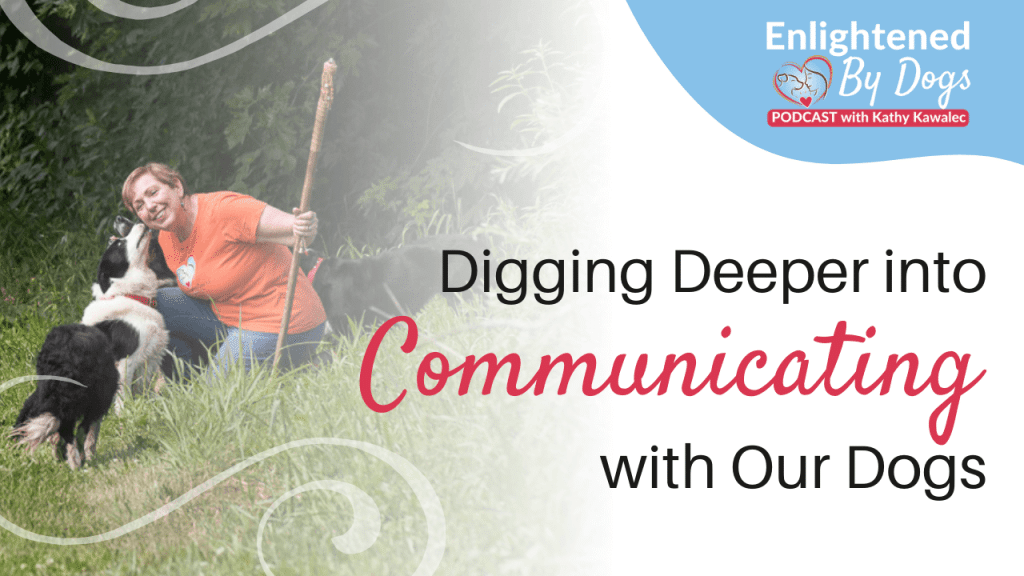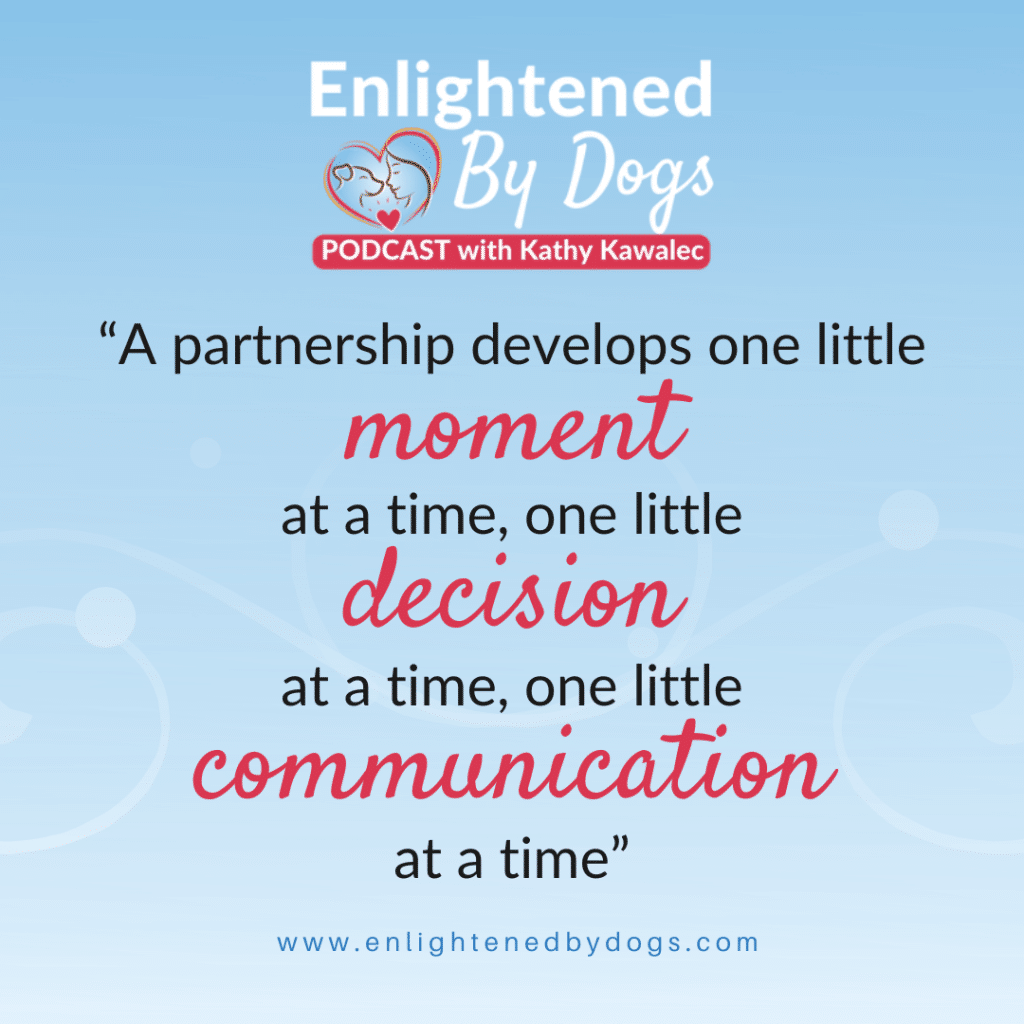Wouldn’t it be amazing if your dog could talk to you?
Well, they do talk to you in a way… they just don’t use words. Instead, they use body language to communicate with us. It’s amazing and yet, it can still be super frustrating when your dog continues to display unwanted behavior (despite your objections!).
Although you love your dog and you’d do anything for them, they can still do things that drive you a little crazy. Don’t feel bad. It happens.
Thankfully, there is a way to defuse the situation and I’m going to let you in on a secret that will become your most powerful and effective tool to live successfully with your dog and resolve unwanted behavior.
Are you ready for it?
The single, most powerful tool we have to live successfully with our dogs is communication. Communication is the answer and the solution to most (if not all) of your dog’s behavioral problems!
Why communication is so important
Unless you and your dog learn to fluently and effectively communicate, you’re going to keep experiencing the same problems and struggles. It’s frustrating, but you can resolve behavioral issues through proper communication.
Developing a trusting partnership relationship with your dog strongly relies on communication.
Obviously, you and your dog are probably not going to sit down and discuss your problems in some type of dog-owner counseling session. So, what does successful communication with your dog look like?
To me, it’s about exchanging information, ideas, and feelings successfully. It’s a form of dialog between us and our dogs. They know how we’re feeling, and we know how they’re feeling. They know what ideas we have, and we know what ideas they have.
When you and your dog understand each other and you can effectively communicate together, your bond deepens and you’ll discover that more often than not, you and your dog are on the same page.
When does miscommunication happen?
Miscommunication happens when we inadvertently teach our dogs to ignore us. We don’t do it on purpose, but it still happens. We ask our dogs to do something, like to come inside, and they don’t listen. It’s frustrating but this usually happens when we focus on training instead of creating a lifestyle.
When you’re not safe, calm, and happy, your dog isn’t safe, calm, or happy. You might not even be aware that your dog is acutely monitoring you and, in all likelihood, imitating you. When you’re distracted or unsure about things, your dog steps up and discerns what they think is relevant and important in any given circumstance.
They’ve seen that you are clearly unsure or anxious about something and now it’s up to them to handle the situation. Without realizing it, you’ve left it up to your dog to figure out what’s important and what isn’t.
How to resolve a lack of communication
If your dog doesn’t listen to you (like, ever), don’t feel disheartened. It’s not because you’re a bad leader or your dog doesn’t love you, it’s simply because there’s been some miscommunication. Thankfully, you can resolve the issue by teaching yourself to be more fully aware, more conscious, and more cognitive of what’s happening in any given situation.
Purposefully communicating with your dog is the best and most effective way to teach your dog to be more attentive and responsive to you.
However, we must be attentive and responsive to ourselves first before we can be attentive and responsive to our dogs. For our dogs to feel safe, calm, and happy – YOU must feel safe, calm, and happy. And that, my friends, is the language of partnership.
The circle of understanding and cooperation
Ah, the circle of understanding and cooperation…this is where we all want to be with our dogs, right? I mean, what’s better than being side by side with our dogs and trusting each other on a much deeper level?
Compared to humans, dogs have retained their animal instincts. Their keen skills of observation have remained intact. Ours…not so much. We don’t rely on those instincts as much as we once did but by taking a step back and revisiting those basic survival instincts, we can learn to observe in a way that helps us communicate more effectively with our dogs.
How we sound can have a huge impact on our dog’s behavior. High-pitched and repetitive sounds inspire action while slow, low, and soothing sounds inspire calmness. Remember that English is not a native language to our dogs. So, verbal cues should be taught last and taught as a verb.
Dogs also communicate through movement. It can be used to grab our dog’s attention and it can also be used to take our dog’s attention away from us. How many times has a running squirrel or rabbit distracted your dog? Now you see what I’m saying, right?
You need to pay close attention to all of these things and how you use them to communicate with your dog. But you also need to consider how your dog is using these things to communicate with you.
Pay attention to your dog’s feelings
Since dogs can’t tell you how they feel, they have to express it through body language. You can gather how they’re feeling from the way they position their ears and tail. Their body posture will give away their emotions in the moment, too. You just need to make sure you’re paying attention to the inaudible ways that your dog communicates.
Think about the intention behind your dog’s actions and reactions. Why are they behaving this way? What is the purpose of their expression? What are they trying to tell you?
Humans and dogs do things with intention. Even if it’s not a conscious decision, there is subconscious intention lying beneath the surface. When we start to think about our intentions and how we communicate our thoughts, feelings, and ideas, it brings us closer towards developing a deeper bond with our dogs.
Not only that but when you consider your dog’s intention behind their behavior, it helps you to understand why your dog is behaving in a certain way. For example, when you call your dog to come inside and they don’t, it’s not because they’re secretly thinking, “screw you, I’m not coming inside just because you asked me to.” Instead, they’re not coming inside simply because they chose not to.
It’s never your dog’s intention to disobey you or to make you feel bad, unwanted, or unloved. Dogs are not callous or spiteful. Whenever your dog doesn’t listen to you, it’s not because they don’t want to listen. It’s because they’re doing something that they consider to be important in that moment.
If you want to develop a deep and loving partnership with your dog, you must learn to listen and communicate with them using the partnership language.
If you’d like to work with me and learn how to create a partnership lifestyle for you and your dog, you can request an invitation to join us in the Brilliant Partners Academy when the doors open for the next enrolment!
You can listen to everything I talked about in this blog post over on my podcast – Enlightened By Dogs. It’s episode 103, which you can listen to here.
Watch a short video trailer of the episode below:






